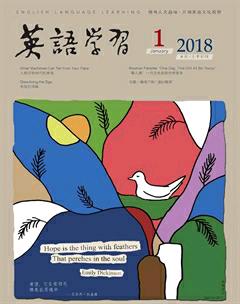中华文化术语选篇
“中华思想文化术语”是浓缩了中华哲学思想、人文精神、价值观念等的以词或短语形式固化的概念和文化核心词。它们是中华民族几千年来对自然与社会进行探索和理性思索的成果,积淀着中华民族最深沉的历史智慧。本文选登“中华文化术语”诠释和英文翻译,使中国人更加理解中国古代哲学思想,也使世界更加了解中华思想文化。
隐秀
Latent Sentiment and Evident Beauty
诗歌与文章既隐含丰富的思想感情,又有秀美的名言佳句。源出《文心雕龙》篇名,在该篇中,“隐”是隐含,指在叙事或写景中隐含超出事、景之外的意义,能引发读者的无限联想;“秀”是秀美,指一篇之中应该有能凸显这一意义的精妙词句。二者密不可分,共同构成优秀文学作品的审美特征。后来也作为诗文写作的一种修辞手法。
This term means that prose and poetry may contain latent sentiments and thoughts, as well as expressions and sentences that present an apparent sense of beauty.“Latent sentiment and evident beauty” first appeared as the title of a chapter in The Literary Mind and the Carving of Dragons. There, “latent sentiment” means what lies beyond events and landscapes in a narrative or a description, triggering imaginations on the part of the reader. On the other hand, “evident beauty” refers to the kind of beauty created by expressions and sentences in a piece of writing, which bring out that latent meaning. The latent and the apparent qualities are inseparable, constituting an aesthetic feature of good literary works. Later, this term developed into a rhetorical device in writing prose and poetry.
引例 Citations:
◎是以文之英蕤,有秀有隐。隐也者,文外之重旨者也;秀也者,篇中之独拔者也。(刘勰《文心雕龙·隐秀》)
(因此优秀的文章要兼具“秀”和“隐”。所谓“隐”,就是指文章在语言之外隐含有多重意蕴;所谓“秀”,则是具有既彰显主旨又独到突出的秀美词句。)
Thus, an excellent piece of writing should have both beautiful in language and a message hidden between the lines. The former refers to beautiful sentences and expressions that accentuate(强调)the message of the writing while the latter represents the multiple significance that lies beyond the text. (Liu Xie: The Literary Mind and the Carving of Dragons)
◎情在词外曰隐,状溢目前曰秀。(张戒《岁寒堂诗话》卷上引刘勰语)
(思想感情隐含于语言背后叫做“隐”,寄寓思想感情的景象鲜活地展现在读者眼前叫做“秀”。)
Latency happens when feelings and thoughts are hidden between the lines of a literary work. Evident beauty occurs when messages of sentiment and feelings are vividly portrayed by the images the author creates.(Zhang Jie: Notes on Poetry Written in the Pine and Cypress Studio)
直 寻
Direct Quest
诗人即兴而感,直接抒写。这是南朝钟嵘《诗品》中针对诗歌过多使用典故的现象提出的创作主张,他汲取了道家的自然思想,通过考察前人的优秀诗篇,提炼出一种新的诗歌创作方式——“直寻”,即直接描写所感知事物,直接抒发内心情感并创造出情景契合的审美意象。明清时期诗学的“性灵说”受到其影响。
A poet should directly express his thoughts and sentiments when he is inspired. This is a concept for writing poems proposed by poetry critic Zhong Rong of the Southern Dynasties in his work “The Critique of Poetry” as a reaction to the excessive use of allusions(典故)and quotes from earlier works. Inspired by naturalist ideas of Daoism and by his own reading of the fine works of earlier poets, he developed a new form of poetic creation which he named“direct quest.” By this, he meant directly describing matters that one senses and learns about, directly expressing ones inner feelings, and creating aesthetic images in which the sensibilities match up with current realities. The theory of natural disposition and intelligence used in Ming- and Qingdynasty poetics was influenced by this idea.
引例 Citations:
◎觀古今胜语,多非补假,皆由直寻。(钟嵘《诗品序》)
(综观古今名篇佳句,大都不是借用前人诗句或使用典故,而是直接从自身体验中寻求而得。)
A comprehensive survey of the best-known works of ancient and current poets shows that most of the poets did not borrow favored lines or literary allusions from their predecessors, but directly sought inspirations from their personal experiences. (Zhong Rong: Preface to “The Critique of Poetry”)
◎我手写我口,古岂能拘牵?(黄遵宪《杂感五首》之二)
(我要用我的文字来表达我想说的意思,怎么能够为古人文章的思想内容和文字形式所束缚?)
Since I want to use my own words to express my feelings, how can I let myself be bound by the content and forms of ancient writings? (Huang Zunxian: Five Poems on Random Thoughts)endprint

